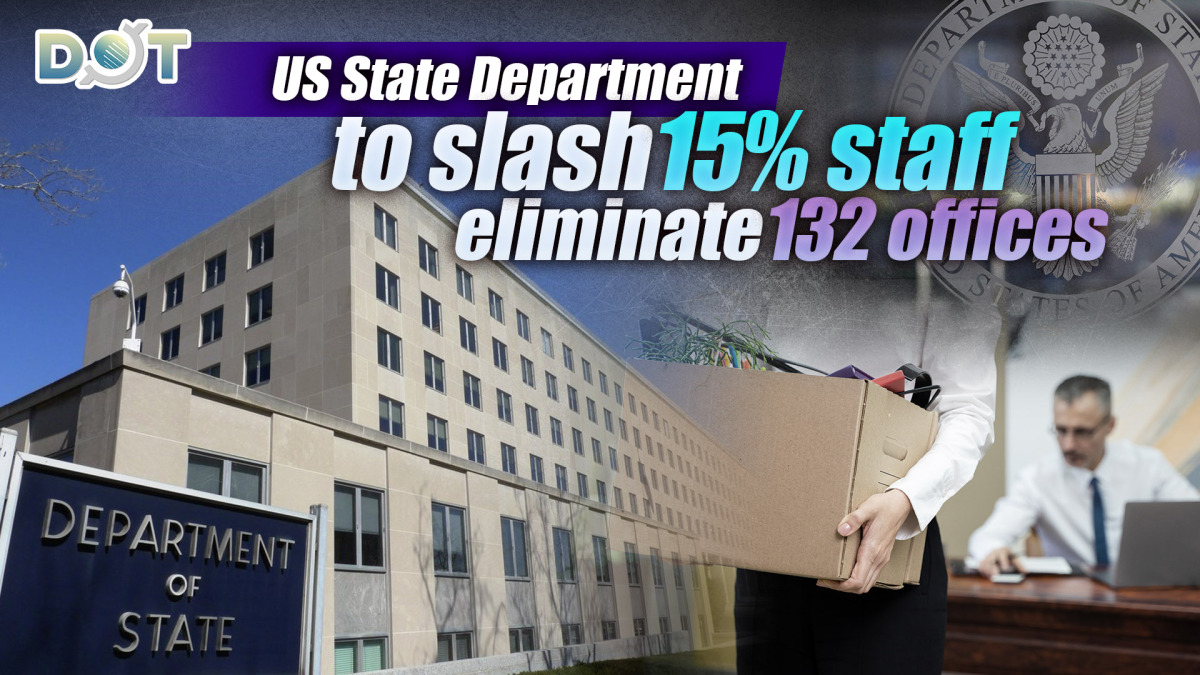
According to CCTV News, on April 22 local time, U.S. Secretary of State Marco Rubio announced a comprehensive restructuring plan for the State Department. Rubio stated that the current State Department is bloated and plagued by bureaucracy, rendering it unable to fulfill its fundamental diplomatic mission. This restructuring plan aims to lead the State Department into the 21st century. It will streamline regional functions to enhance efficiency, eliminate redundant entities, and terminate projects that are inconsistent with America's core national interests.
Approximately 15% Employee Reduction in the U.S.
The first phase of the restructuring plan will involve reducing the workforce in the U.S. by about 15%, eliminating 132 offices. Reports indicate that this 15% reduction will result in over 2,000 employees losing their jobs. The State Department announced that affected employees would receive layoff notifications by July 1 and stated that it is "actively exploring" voluntary retirement incentives.
Focus on the Democracy and Human Rights Departments
The most notable changes will take place in the office of the Undersecretary for Civilian Security, Democracy, and Human Rights, which will be renamed the Office of Foreign Assistance and Human Rights. Many existing divisions within this office, including the Office of Global Criminal Justice, the Office to Monitor and Combat Trafficking in Persons, and the Bureau of Conflict and Stabilization Operations, seem to be excluded from the State Department's new organizational structure. These offices have played a crucial role in shaping U.S. policy on preventing mass atrocities, combating human trafficking, and negotiating peace in international conflicts.
Additionally, other departments that will be eliminated include the Office of Global Women's Issues, the Energy Resources Bureau, and the Office of Global Partnerships, which collaborates with the U.S. private sector to promote American interests overseas. The Energy Resources Bureau will merge into the Bureau of Economic and Business Affairs to maintain a focused approach on expanding and exporting U.S. energy. The department has also indicated it will grant more responsibilities and authority to regional bureaus, which will manage non-security assistance as well.
New Institutions to Address Emerging Threats
Meanwhile, the State Department will establish several new entities, including a new division specifically addressing so-called "emerging threats," focusing on areas such as cybersecurity and the spread of artificial intelligence. An office dedicated to diplomatic and humanitarian affairs will also be created to coordinate overseas aid programs that remain within the State Department. This restructuring also aims to find new "homes" for the remaining functions of the U.S. Agency for International Development (USAID), which has been dismantled.
No Immediate Impact on Overseas Embassies and Institutions
Reportedly, there will be no significant adjustments to the departments related to diplomacy in this restructuring. U.S. Deputy Secretary of State Richard Randt stated that the proposed plan "will not affect any overseas embassies, institutions, or operations." A U.S. diplomatic official mentioned that while the plan changes many aspects, most changes, aside from those in the democracy and human rights sector, are not "earth-shattering."
According to U.S. media reports, the restructuring plan has received preliminary approval from Republicans on Capitol Hill. However, Democrats have criticized this move as weakening America's "important influence" globally.
Previously, U.S. media reported that Trump intended to significantly reduce the size of the State Department by closing U.S. consulates abroad and cutting traditional soft power promotion departments, focusing more on immediate American interests. On April 15, CNN reported that an internal document from the U.S. State Department indicated that the Trump administration was considering closing nearly 30 overseas embassies and consulates.
Related News:
US finalizes tariffs on solar imports from Southeast Asia, reaching up to 3,500%




















Comment